Quick Start
The following quick-start guide takes you through steps to add the Ribbon control to the application through designer and code.
Add Ribbon Through Designer
This section demonstrates creating a simple WinForms App to add Ribbon control that includes Tabs, Groups and few controls, as shown in the below image:
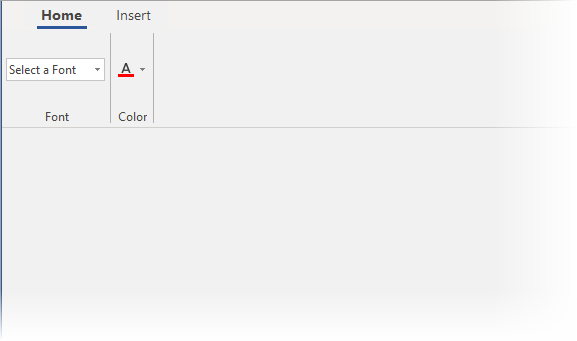
Create a new Windows Forms App.
Drag and drop C1Ribbon control to your form. The Ribbon control is positioned at the top of the form. By default, an empty Tab and a Group is added automatically.
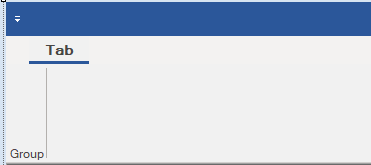
Select the C1Ribbon control to view its floating toolbar. From the toolbar, click the Action button and choose AddTab from the list of actions. Observe, the newly created tab contains an empty group, by default.
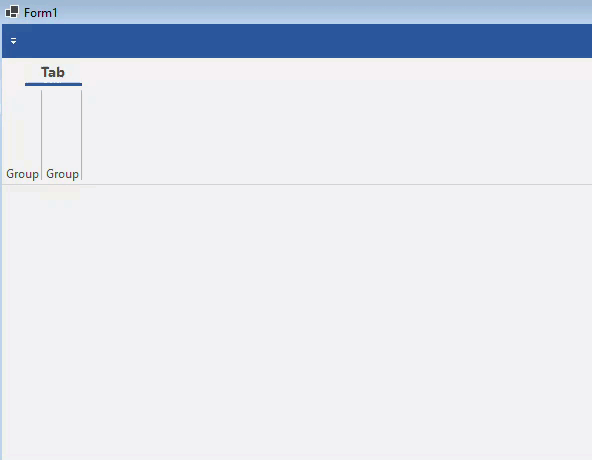
Rename the tabs in the Ribbon control through in-place text editing, Text Settings in the floating toolbar, or by setting the Text property from the Properties window. For example, two tabs are added with the names Home and Insert, respectively, as shown in the following image.
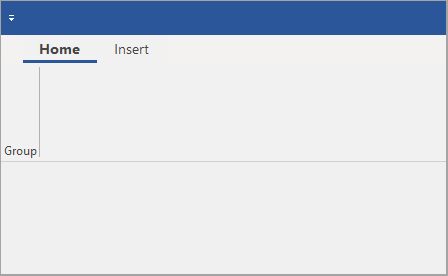
Click the Home tab to open its floating toolbar, select Add Group from the list of available actions to add a new group to the tab.
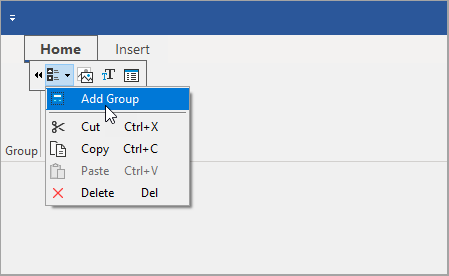
Change names of the two groups added to the Home tab to Font and Color through in-place text editing, Text Settings in the floating toolbar, or by setting the Text property from the Properties window.
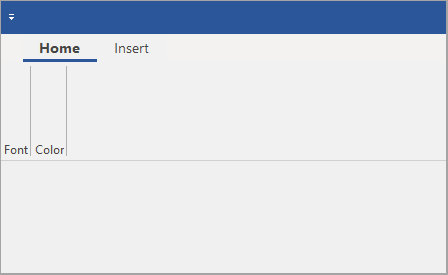
Select a group to open its floating toolbar, then add control from the available list of controls. For example, here we have added Font ComboBox control to the Font group.
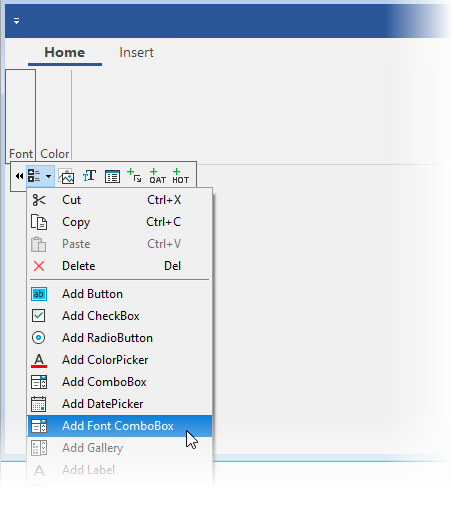
In Font ComboBox control, add placeholder text, say "Select a Font", as shown in the below image.

Under Color group, add ColorPicker from the list of available Actions.
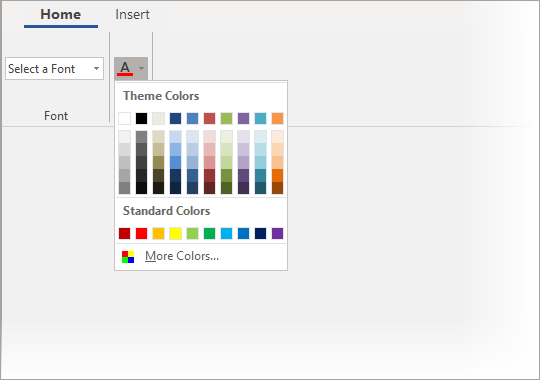
You can also add other items from the group item list to this group as per your requirement.
Run the application and observe the output.
Optionally, you can also convert a Windows Form to a Ribbon Form by following these steps.
- Include C1.Win.Ribbon namespace.
- Inherit the Windows Form from the C1RibbonForm as shown in the below code section.
partial class Form1 : C1RibbonForm
{
//...
}
type=note
Note: RibbonForm is an extension that enables you to apply different visual styles to Ribbon. The basic difference between the Windows Form and Ribbon Form is that, the Ribbon Form does not include the title bar of the Windows Form.
Add Ribbon Through Code
This section demonstrates creating a simple WinForms App to add Ribbon control that includes Tabs, Groups and a few controls through code, as shown in the below image.

Complete the following steps to add Ribbon control to the Windows Form:
Create a new Windows Forms App.
Open the code view, create and instantiate an object of C1Ribbon class and add it to the form as illustrated in the below code.
C1Ribbon customRibbon = new C1Ribbon(); this.Controls.Add(customRibbon);Create an instance of RibbonTab class, assign value to its Text property, then add it to the Ribbon control using Add method of RibbonTabCollection class. For example, we created two instances of RibbonTab class to show two tabs in the Ribbon, named Home and Insert using the following code.
///Adding home tab. RibbonTab homeTab = new RibbonTab(); homeTab.Text = "Home"; customRibbon.Tabs.Add(homeTab); ///Adding insert tab. RibbonTab insertTab = new RibbonTab(); insertTab.Text = "Insert"; customRibbon.Tabs.Add(insertTab);Create an instance of RibbonGroup class to add group under specific tab. Assign value to its Text property, then add it to the a tab using Add method of RibbonGroupCollection class. For example, we created two instances of RibbonGroup class to add two groups to Home tab, named Font and Color using the following code.
///Adding group named "Font" to the "Home" tab RibbonGroup fontGroup = new RibbonGroup(); fontGroup.Text = "Font"; homeTab.Groups.Add(fontGroup); ///Adding group named "Color" to the "Home" tab RibbonGroup colorGroup = new RibbonGroup(); colorGroup.Text = "Color"; homeTab.Groups.Add(colorGroup);Under the home tab, add the FontPicker and ColorPicker controls, as items to the Font and Color groups respectively.
///Add item fontpicker to fontgroup in Home tab RibbonFontComboBox fontComboBox = new RibbonFontComboBox(); fontComboBox.Text = "Select a Font"; fontGroup.Items.Add(fontComboBox); ///Add item colorpicker to color group in Home tab RibbonColorPicker colorPicker = new RibbonColorPicker(); colorGroup.Items.Add(colorPicker); //Define the iconset to display next to Colorpicker control colorPicker.IconSet.Add(new C1BitmapIcon(null, new Size(20, 20), Color.Transparent, Image.FromFile(@"images\fontcolor.png")));Run the application and observe the output.
Optionally, you can convert a Windows Form to a Ribbon Form by following the below steps.
- Include C1.Win.Ribbon namespace.
- Inherit the Windows form from the C1RibbonForm as shown in the below code section.
partial class Form1 : C1RibbonForm
{
//...
}
type=note
Note: RibbonForm is an extension that enables you to apply different visual styles to Ribbon. The basic difference between the Windows Form and Ribbon Form is that, the Ribbon Form does not include the title bar of the Windows Form.


